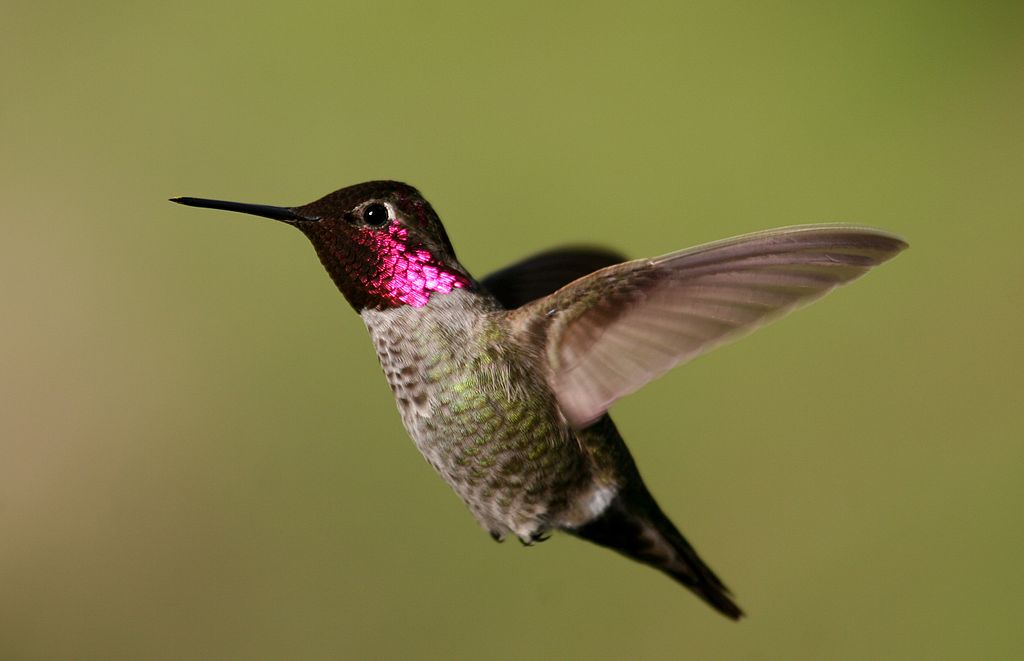
Male flying in California, USA
Description

Female hovering
Anna's hummingbird is 3.9 to 4.3 in (9.9 to 10.9 cm) long. It has an iridescent bronze-green back, a pale grey chest and belly, and green flanks. Its bill is long, straight, and slender. The adult male has an iridescent crimson-red derived from magenta to a reddish-pink crown and gorget, which can look dull brown or gray without direct sunlight and a dark, slightly forked tail. Females also have iridescent red gorgets, though they are usually smaller and less brilliant than the males'. Anna's is the only North American hummingbird species with a red crown.[3] Females and juvenile males have a dull green crown, a grey throat with or without some red iridescence, a grey chest and belly, and a dark, rounded tail with white tips on the outer feathers.
These birds feed on nectar from flowers using a long extendable tongue. They also consume small insects and other arthropods caught in flight or gleaned from vegetation. A PBS documentary shows how Anna's hummingbirds eat flying insects.[4] They aim for the flying insect, then open their beaks to capture the prey.
While collecting nectar, they also assist in plant pollination. This species sometimes consumes tree sap.[5] The male's call is scratchy and metallic, and it perches above head-level in trees and shrubs.[3] They are frequently seen in backyards and parks, and commonly found at feeders and flowering plants.
Anna's hummingbirds can shake their bodies 55 times per second to shed rain while in flight, or in dry weather, to remove pollen or dirt from feathers.[6] Each twist lasts four-hundredths of a second and applies 34 times the force of gravity on the bird's head.
Reproduction
A female incubates eggs in a camouflaged nest.
Two nestlings are fed by a female hummingbird.
Unlike most northern temperate hummingbirds, the male Anna's hummingbird sings during courtship. The song is thin and squeaky, interspersed with buzzes and chirps, and is drawn to over 10 seconds in duration. During the breeding season, males can be observed performing an aerial display dive over their territories. The males also use the dive display to drive away rivals or intruders of other species. When a female flies onto a male's territory, he rises up about 130 ft (40 m) before diving over the recipient. As he approaches the bottom of the dive, the male reaches an average speed of 27 m/s (89 ft/s), which is 385 body lengths per second.[7] At the bottom of the dive, the male travels 23 m/s (51 mph), and produces a loud sound described by some as an "explosive squeak" with his outer tail-feathers.[8][9]
Anna's hummingbirds hybridize fairly frequently with other species, especially the congeneric Costa's hummingbird.[2] These natural hybrids have been mistaken for new species. A bird, allegedly collected in Bolaños, Mexico, was described and named Selasphorus floresii (Gould, 1861), or Floresi's hummingbird. Several more specimens were collected in California over a long period, and the species was considered extremely rare.[10] The specimens were the hybrid offspring of an Anna's hummingbird and an Allen's hummingbird. A single bird collected in Santa Barbara, California, was described and named Trochilus violajugulum (Jeffries, 1888), or violet-throated hummingbird.[11] It was later determined to be a hybrid between an Anna's hummingbird and a black-chinned hummingbird.[12][13]
Locomotion
During hovering flight, Anna's hummingbirds maintain high wingbeat frequencies accomplished by their large pectoral muscles via recruitment of motor units.[14] The pectoral muscles that power hummingbird flight are composed exclusively of fast glycolytic fibers that respond rapidly and are fatigue-resistant.[14]Distribution
Anna's hummingbirds are found along the western coast of North America, from southern Canada to northern Baja California, and inland to southern and central Arizona, extreme southern Nevada and southeastern Utah, and western Texas.[2] They tend to be permanent residents within their range, and are very territorial. However, birds have been spotted far outside their range in such places as southern Alaska, Saskatchewan, New York, Florida, Louisiana, and Newfoundland.[15][16]Anna's hummingbirds have the northernmost year-round range of any hummingbird. During cold temperatures, Anna's hummingbirds gradually gain weight during the day as they convert sugar to fat.[17][18] In addition, hummingbirds with inadequate stores of body fat or insufficient plumage are able to survive periods of subfreezing weather by lowering their metabolic rate and entering a state of torpor.[19]
The population of Anna's hummingbirds is an estimated 1.5 million, which appears to be stable, and they are not considered an endangered species.[1]


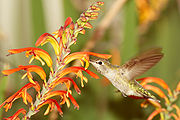

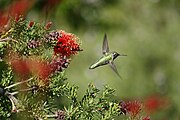



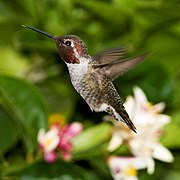

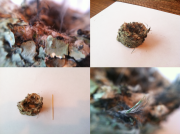

No comments:
Post a Comment
Note: Only a member of this blog may post a comment.